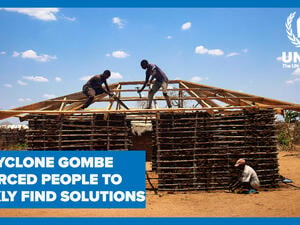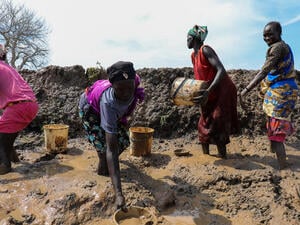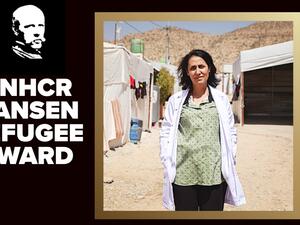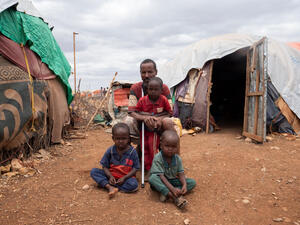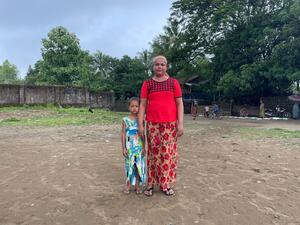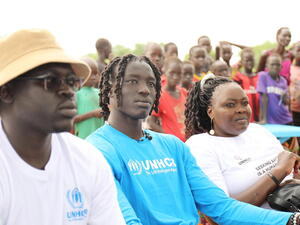Q&A: OAU Convention remains a key plank of refugee protection in Africa after 40 years
Q&A: OAU Convention remains a key plank of refugee protection in Africa after 40 years

George Okoth-Obbo, Director UNHCR Africa Bureau
GENEVA, September 9 (UNHCR) - Exactly 40 years ago this Thursday, member states of the Organization of African Unity (OAU), since renamed the African Union, adopted landmark legislation on refugees. Adopted in a context of decolonization struggles across the continent, the 1969 OAU Refugee Convention is considered the most generous and flexible international agreement on refugee protection. UNHCR Africa Bureau Director George Okoth-Obbo, in written responses to questions from Communications Officer Fatoumata Lejeune-Kaba, discusses the key piece of legislation amid growing forced displacement challenges across Africa. Excerpts:
Why is the Convention hailed as a landmark achievement?
First and foremost, the 1969 OAU Convention set down a basis for refugee jurisprudence and practice in Africa to develop in a predictable and asylum-friendly manner. Secondly, in doing so, the Convention cemented in Africa the international refugee framework represented by the 1951 [UN Refugee} Convention, which it incorporated both substantively and in mandating wholesome collaboration with the machinery of enforcement set down in that Convention.
Thirdly, not only did the 1969 Convention thus affirm international refugee law, it also separately made an important contribution to its progressive development. Its most celebrated feature in this respect is the expanded refugee definition. The Convention was, however, also the first international refugee instrument that elaborated the principles relating to voluntary repatriation. It also defined features of international solidarity and burden-sharing in the protection domain that, by comparison, were not fleshed out at all in the 1951 Convention.
Fourthly, the Convention represented a successful battle against a trend that was pulling strongly for a heavily securitarized concept of refugee law in Africa. It reinforced the character of asylum and refugee protection as quintessentially humanitarian, friendly and law-based. Finally, the Convention set down principles which were specific to Africa, including additional exclusion clauses and the prohibition of so-called "subversive activities" within the refugee and asylum context. Some of these provisions have been criticised, but they were necessary.
Who does it protect?
The Convention is a framework for the protection of people who are refugees, according to the definition of a refugee contained in that instrument. The second part of that definition is widely viewed as having been elaborated to cover so-called "massive refugee situations." While strictly speaking this is not correct, it is true that the language of the Convention, and the interpretation which has been placed on it in practice, are much more accommodating of large-scale refugee situations than similar interpretations that have taken root around the 1951 Convention. The 1969 Convention has thus enabled millions of people in need of protection to be covered and helped with greater legal and operational facility in Africa and other parts of the world, where the Convention has inspired similar legal developments or applications of refugee law.
Some refugees in Africa still face problems in host countries. Doesn't the Convention guarantee refugees and asylum seekers basic rights?
Not only the 1969 OAU Convention, but also other regional human rights instruments, such as the African Charter on Human and Peoples Rights, and international conventions provide a full spectrum of refugee protection rights and obligations. However, there have been and continue to be failures of protection of these rights, even though several countries have over the decades demonstrated a solid record of protecting, assisting and finding solutions for hundreds of thousands of refugees.
The failures cannot, in my view, be put at the door of the 1969 Convention itself. Derelict state behaviour is usually the problem, even if there are also cases in which the inability or failure of refugees to access their full legal rights is due to objective, material, social, economic or political factors. National security interests have always been the source of countervailing pressures, and in some instances have grown even worse. However, there is really no evidence to support the contention that refugees are an inherent source of risk to the security of a host state or population. On the contrary, strict adherence to the essential refugee law principles, such as those contained in the OAU Convention, is often an important step in deterring any abuse or misuse of refugee status and the asylum system.
Who protects the growing number of internally displaced Africans?
People forcibly displaced internally by conflict or other factors, of which climate change is emerging as an eminent threat, are the most obvious example of a group that is not protected under the 1969 Convention . . . The primary responsibility is that of states themselves, to ensure that their nationals are protected at home or in second or third countries in which they are forced to seek safety. The international community, often acting through the United Nations, also has important responsibilities. For example, UNHCR, working with sister agencies under the so-called "cluster approach," is involved in protecting and providing assistance to an ever increasing number of internally displaced people (IDP) in Africa. A special summit of the African Union next month in the Ugandan capital of Kampala is expected to adopt a regional convention on internal displacement.
What difference will the new Convention make?
This Convention, the first of its kind in the world, should help systematize the humanitarian responses being delivered for internally displaced people at all levels on the continent. In this context, it is critical that the Convention elaborates the primary obligations of states, ranging from the responsibility to prevent displacement itself to responses which should be activated when and where displacement takes place. The substantive content of the Convention, in terms of applicable standards, rights and responsibilities, is derived from the UN Guiding Principles on Internal Displacement, so the Convention will also play a key role in upgrading those principles from their status as "soft law" to conventionally binding obligations.
The role of humanitarian players such as UNHCR, which is mentioned in the draft text, is also a key feature of the Convention . . . This has often been a point of contention in the past, as it involves matters of national sovereignty. UNHCR and other humanitarian actors thus look forward very much to this Convention coming into force.
If the Convention on Internal Displacement is never needed because people are not forcibly displaced in the first instance, that will be the greatest and most important difference for the people of Africa that this Convention could ever bring.

